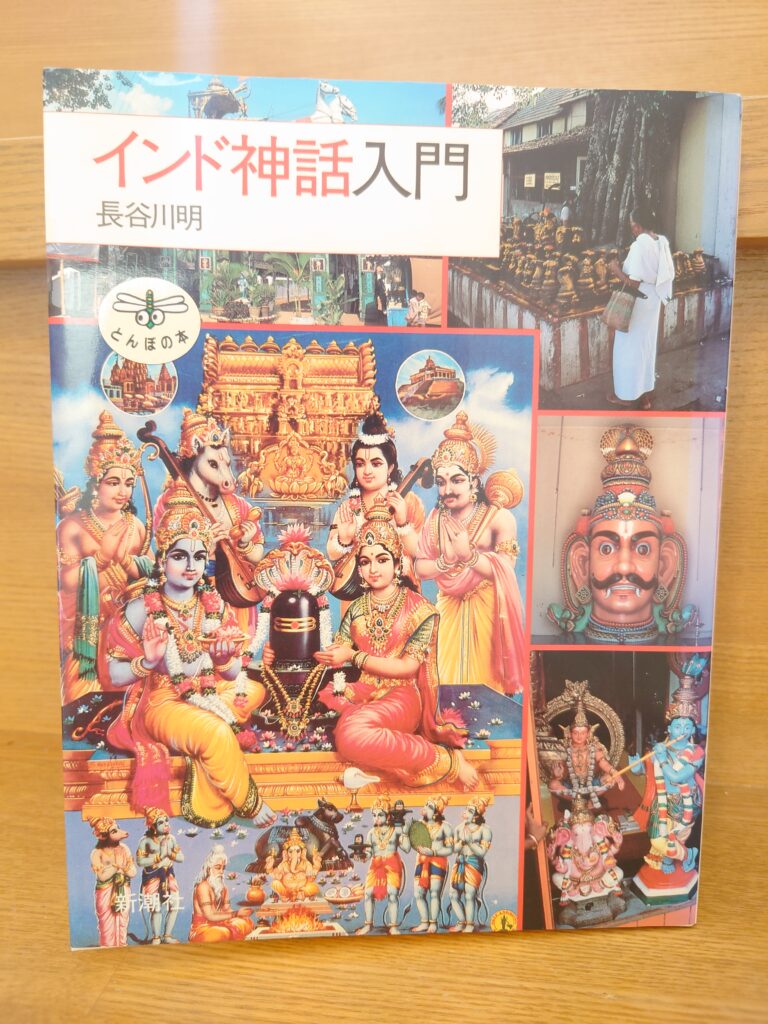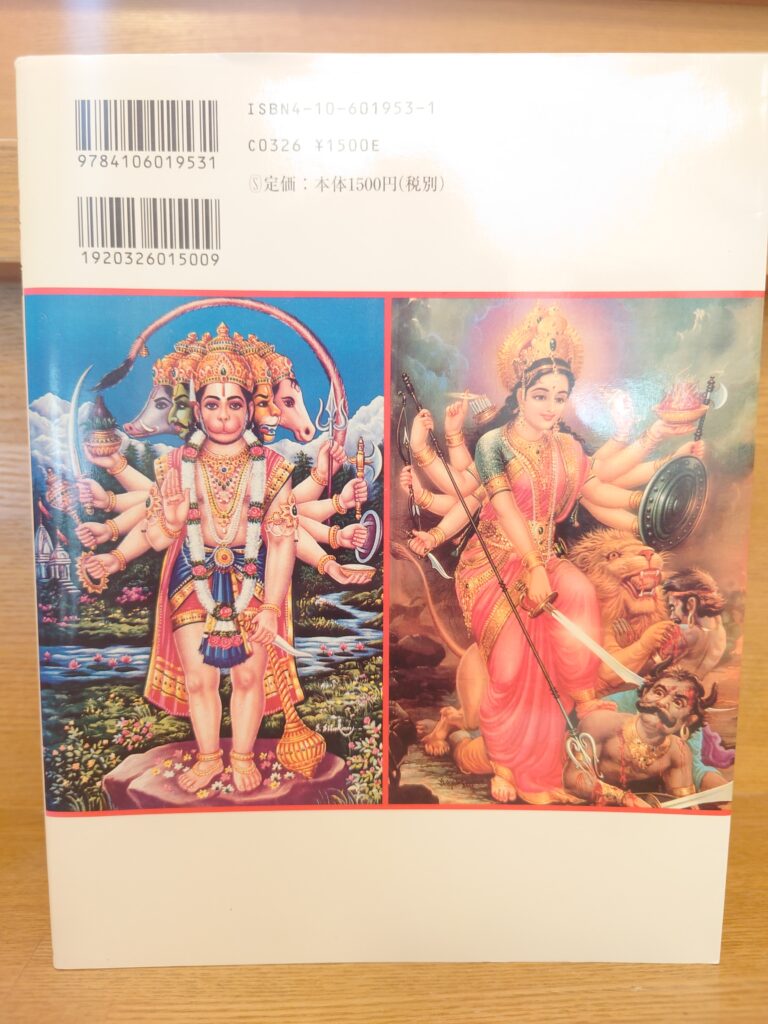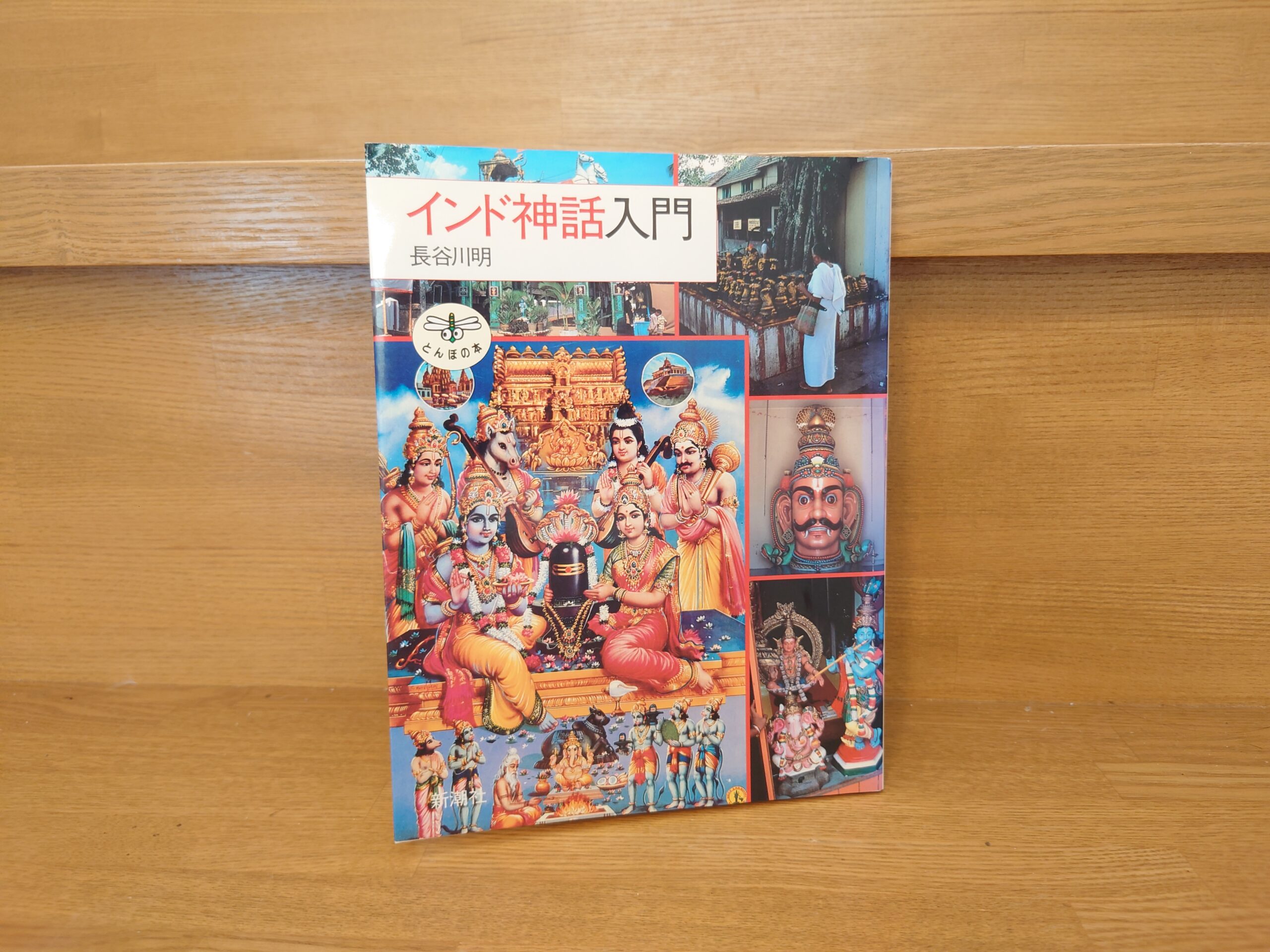Akira Hasegawa's "Introduction to Indian Mythology" Overview and Comments - Hindu Gods in a Visual Learning Environment! Recommended for introductory reading!
I would like to introduce "An Introduction to Indian Mythology" by Akira Hasegawa, published by Shinchosha in 1987. I read the 21st printing of the revised edition in 2002.
Let's take a quick look at the book.
Publisher Content Information
The heaven and earth of India are filled with gods. The stories of India's unique deities, represented by Vishnu and Shiva, are visually explained through popular religious paintings and statues of deities.
Table of Contents
Chapter 1: What is Hinduism?
Kinokuniya BookstoreProducts Page.
Chapter 2: Hindu Gods (Brahma and the Trinity; Vishnu and his incarnations; Shiva and Linga worship; Goddesses and sex power beliefs; Krishna's life; Ganesha; Skanda and Murugan; South Indian gods; Surya and the nine days)
Chapter 3: The World of the Great Epics ("Ramayana" and "Mahabharata")
Chapter 4: Other Religions (Jainism; Sikhism; Islam and Christianity; New Buddhism)
This book is a recommended introduction to learning about Hindu deities along with numerous visuals.
The author states the following about this book in his "Introduction".
If you have traveled to India, you have probably seen strange, yet realistic and vividly colored paintings of people, gods, and monsters everywhere. You may have gazed at them on the walls of stores or in the living rooms of Indian families and been surprised to see a beautiful female figure with four hands. Although the painting style is clearly influenced by Western art, the colors and surrealistic content of these paintings, which form a very Indian world, depict mainly Hindu deities, and are printed in large quantities and sold at low prices ranging from one to five rupees (one rupee is about five yen) for a variety of sizes. The scenes depicted on them are mainly of Shiva. The scenes depicted include well-known Hindu deities such as Shiva, Vishnu, Lakshmi, and Ganesha, as well as famous myths related to these deities and temple omens, so that they are like bromides of the deities. There are also a small number of Jain and Buddhist images, as well as images of historical figures such as Mahatma Gandhi and Jawaharlal Nehru.
The first time I saw such popular religious paintings (which Indians simply refer to as pictures of God) was on a trip to Western India in 1978. I found a strange and mysterious picture hanging on the driver's seat of a cab and asked him what it was. I no longer remember what it was a painting of, but after buying various ones, I realized that the variations were not infinite, but there were certain rules. My interest started from a simple question: what is depicted here and what does it mean? This is still the case today, and I am not yet in a position to say that I understand it very well, but thanks to some study, I have gained enough knowledge to be able to give a simple explanation to someone who knows nothing about it. This book is a compilation of that knowledge.
Shinchosha, Akira Hasegawa, An Introduction to Indian Mythology, p. 4.

This is Shiva, one of the main deities of Hinduism. The unique colors and the touch of the painting, which can even be described as bizarre, express the atmosphere of India. The unique colors and the touch of the painting, which is even bizarre, give it a distinctly Indian atmosphere.


And here are the front and back covers of this book.
I picked up this book rather soon after I started learning about India, but I have a history of giving up reading it because I just could not get used to the pictures.
To be honest, I found this strangely realistic painting eerie. It was so terrifying to me that I would not be able to sleep if I saw it at night in a dark room. How about you?
But when I read this book again a few months after learning about India, I was amazed. I had once had such a rejection reaction to this book, but now I can read it with ease! Moreover, I even feel a strange affinity with the pictures!
I found myself wondering what in the world had happened to me.
Surely this may be because as I learn more about India I am becoming more accustomed to it.
I even feel a sense of kinship with the Indian gods that once seemed so eerie to me....
I am a Japanese, so the feeling of closeness must be far beyond my imagination for Indian people. I was surprised at this.
In this book, you can learn about such Indian deities with a lot of iconography. It is very easy to understand and appreciate that you can learn the characteristics of the gods and how to recognize them by actually seeing them.
As foreigners, it is difficult for us to distinguish between Indian deities at a glance, but there are certain points that can be used to identify them. Each deity has its own unique appearance and possessions. Once you know how to recognize them, you will feel more familiar with Indian deities.
I have studied India mainly through the text of books, but it was refreshing and fun to actually take a closer look at the deities in this way. At first, I was so eerie that I could not even open the book, but now this book is my favorite book. I pick up this book every now and then to review the characteristics of each deity and say, "Oh, this is Shiva's characteristic. This is a useful book.
The gods may seem eerie to beginners in India, but once you get used to them, there is a strangeness that feels strangely familiar. We invite you to experience this sense of wonder. I highly recommend this work to those who are interested in Indian mythology.
The above is "Akira Hasegawa's "Introduction to Indian Mythology" - Hindu Gods in a visual way! Recommended as an introductory book!" This is also recommended as an introductory book!
Next Article.
Click here to read the previous article.
Related Articles





































